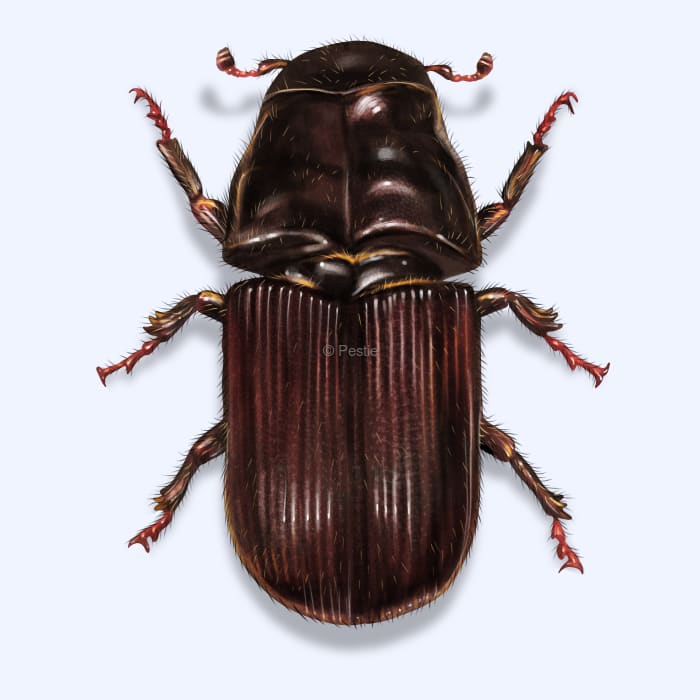How to identify and get rid of bark beetles

Death by a thousand beetle holes
Trees are cut down day after day by big machines, powerful saws, and the might of mankind. But imagine a tiny insect, no bigger than a grain of rice, taking down a mighty walnut or pine tree. That may sound impossible to some, but not for bark beetles.
These little insects have a big impact on forests and yards across the country. They hide underneath tree bark, feeding on the tree's phloem and boring holes into the wood. While some species attack living trees, most thrive in weakened or dying trees. The most common bark beetles infest pine trees, but some species feed on hardwood and broadleaf trees, too.
The accidental introduction of invasive species from other locations has caused forests to come under more intense attack, and the impact continues to spread to backyard trees. Bark beetles have been known to spread fungal diseases that can weaken or even kill trees.
How to identify bark beetles
Bark beetles are tiny, cylindrical insects that you might find burrowing into the bark of your trees. They're usually black, brown, or reddish-brown and have distinct short antennae. If you notice trees with patches of dead leaves, holes in the bark, or sawdust-like material at the base, bark beetles might be the cause.
To check if you have a bark beetle infestation, look under the bark of weak trees. Look for galleries that wind back and forth. You can typically tell the bark beetle species by the shape and pattern of the tunnels they create under the bark.
How big are bark beetles?
Bark beetles can grow to be about 1/8 to 1/4 inch long.
What other pest looks like a bark beetle?
Ambrosia beetles are almost indistinguishable from bark beetles. The biggest difference is where they feed. While bark beetles stay between the outer and inner bark, ambrosia beetles burrow into the xylem or core of the wood. They will also create a frass toothpick extending from the entrance hole.
Where do bark beetles live?
They can be found across the United States, particularly in forests and wooded areas. You can also find them in neighborhood trees, city parks, or yards.
How to get rid of bark beetles
Once a tree has bark beetles, there's little that can be done to eliminate the bark beetles. However, prevention is the best course of action to keep bark beetles away.
Strategies to prevent bark beetles from infesting your trees include:
- Remove infested wood: To prevent spread, remove and destroy infested trees or limbs
- Keep trees healthy: Proper watering and care can make trees less inviting to beetles.
- Be careful with firewood: Don't transport firewood from other areas, as it can spread beetles.
- Reduce tree stress: Applying mulch can help retain soil moisture, and properly pruning can reduce tree stress.
If you have high-value trees that you really care about, applying a pesticide treatment on the tree directly can help, although you may risk killing beneficial insects that keep bark beetles in check.
Treat bark beetles with Pestie
If you're still having trouble keeping bark beetles away, the best option is to use a pro-grade, effective pest control solution like Pestie.
Pestie is a do-it-yourself pest control solution that's specially designed to keep bark beetles and other pests away from your home.
With Pestie, you can rest easy knowing that your living space is protected and free of creepy crawlies. And the best part? It's designed for people, pets, and the planet, so you can say goodbye to harsh chemicals and hello to peace of mind!
- Save hundreds compared to traditional annual pest plans
- People, pet, and planet-friendly
- Pro-grade customized formulas
Quick facts
- Scientific name
Subfamily - Scolytinae
- Colors
Dark brown or black
- Life span
1+ years
- Diet
Inner bark of trees
How dangerous are Bark Beetles?
Low danger risk
Bark beetles are not harmful to people or pets but can devastate forests and backyard trees.
Bark beetles are actually weevils! Scientists recently discovered the close relation between these two beetles and officially classified bark beetles in the weevil family, even though they don't have the long snout.








